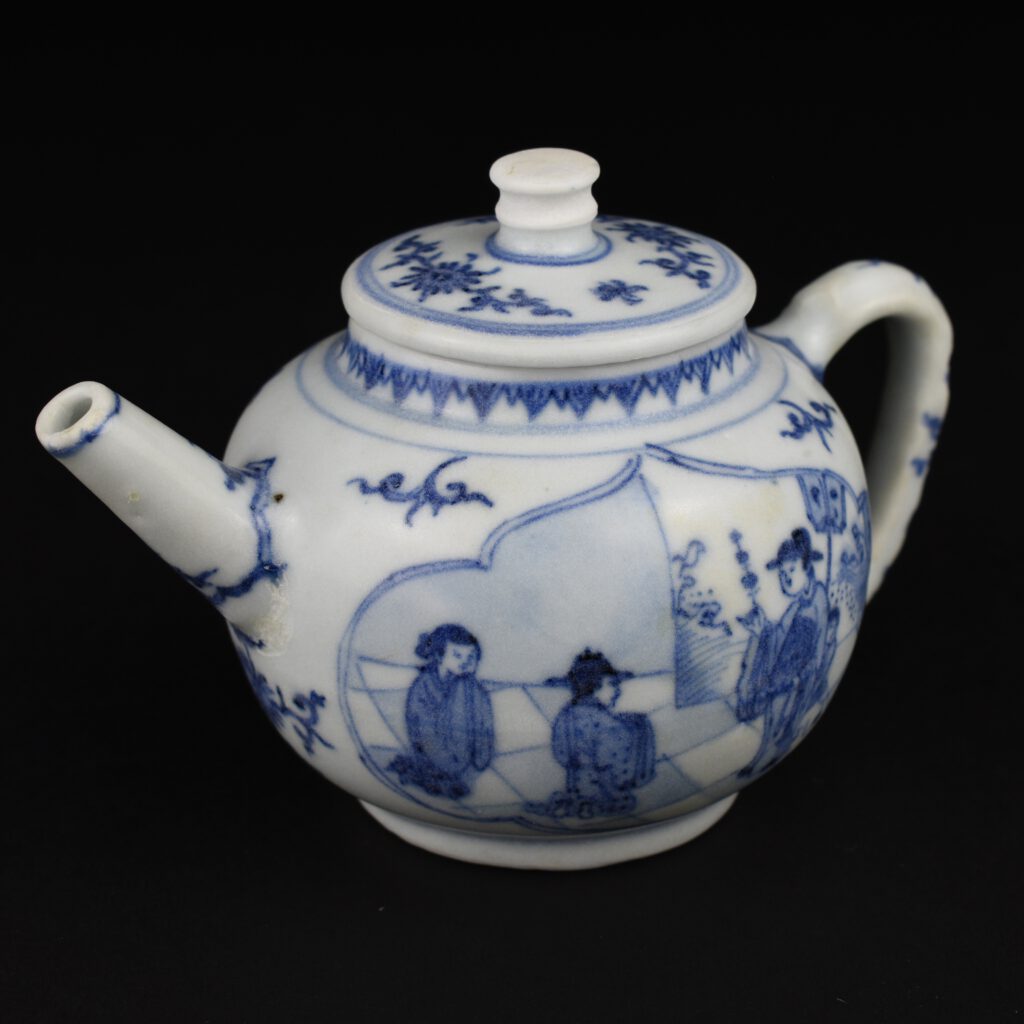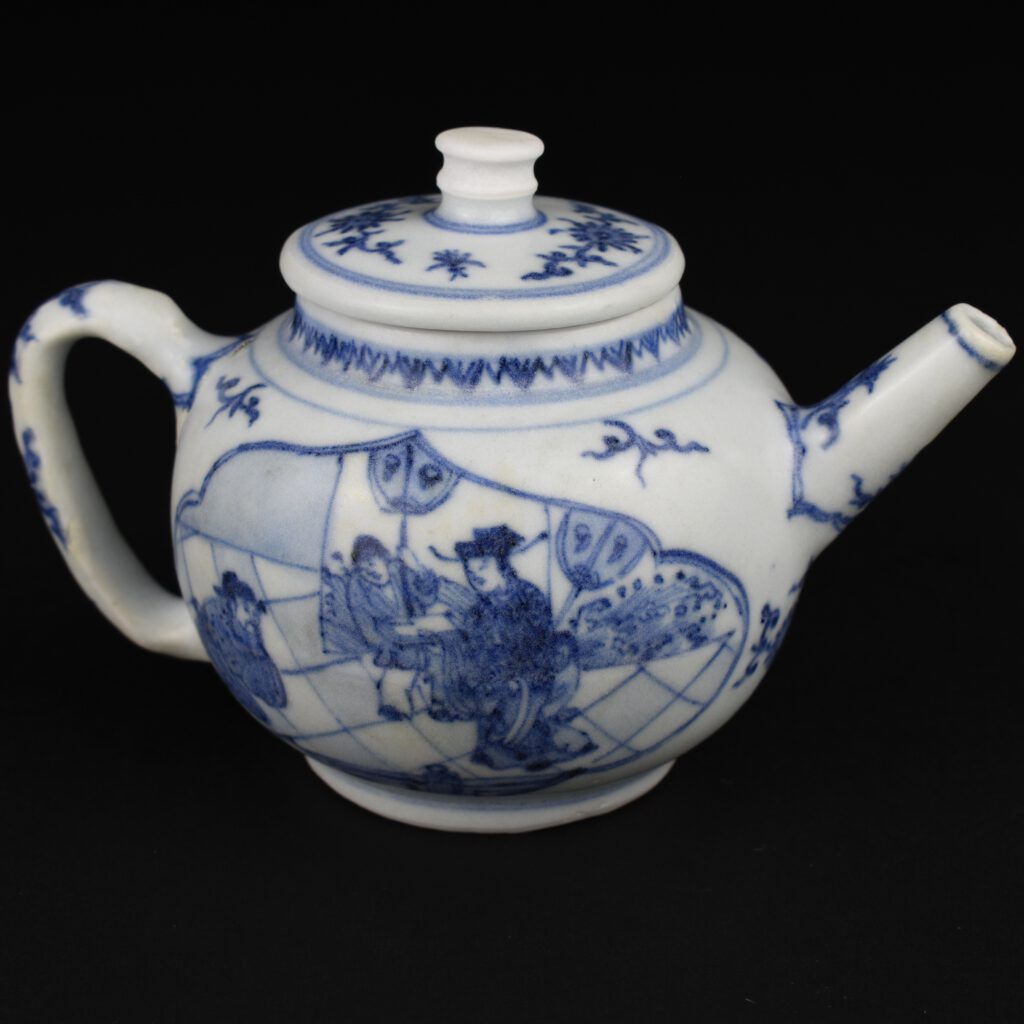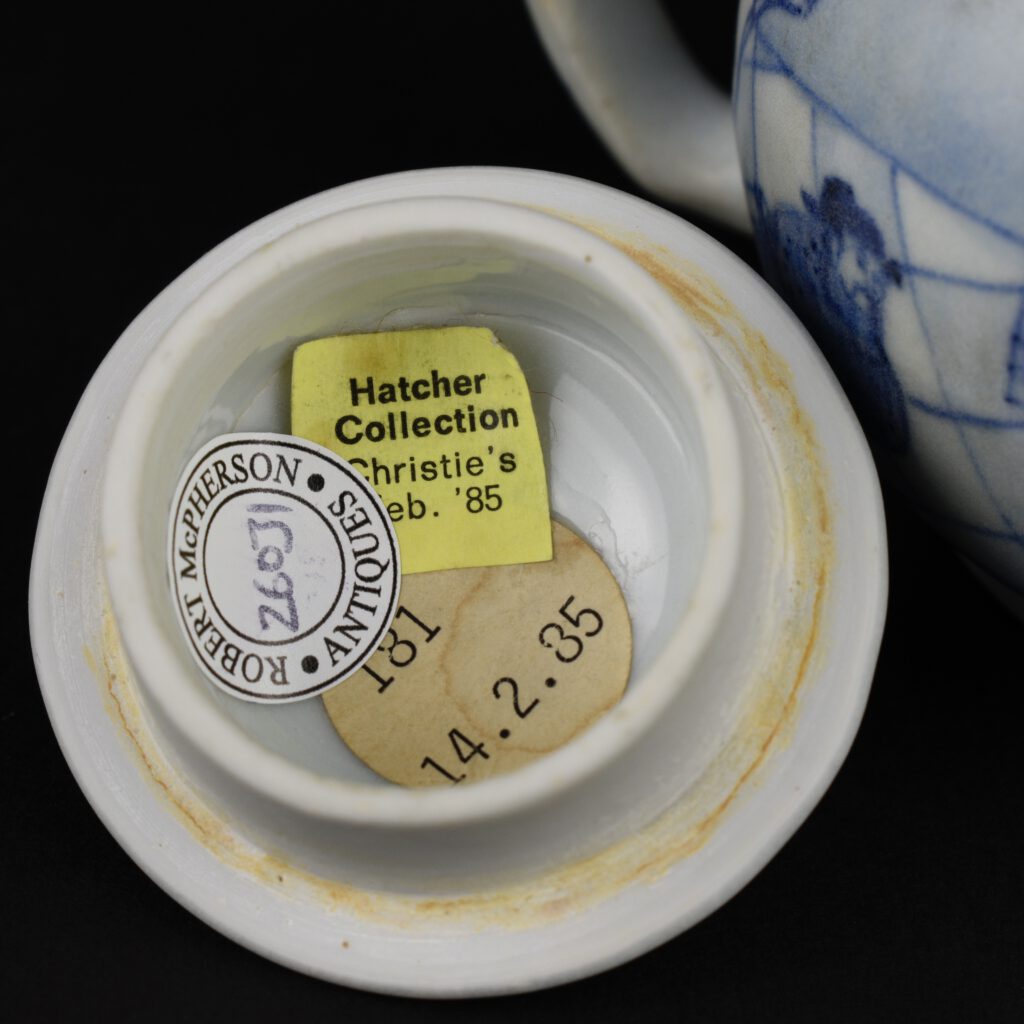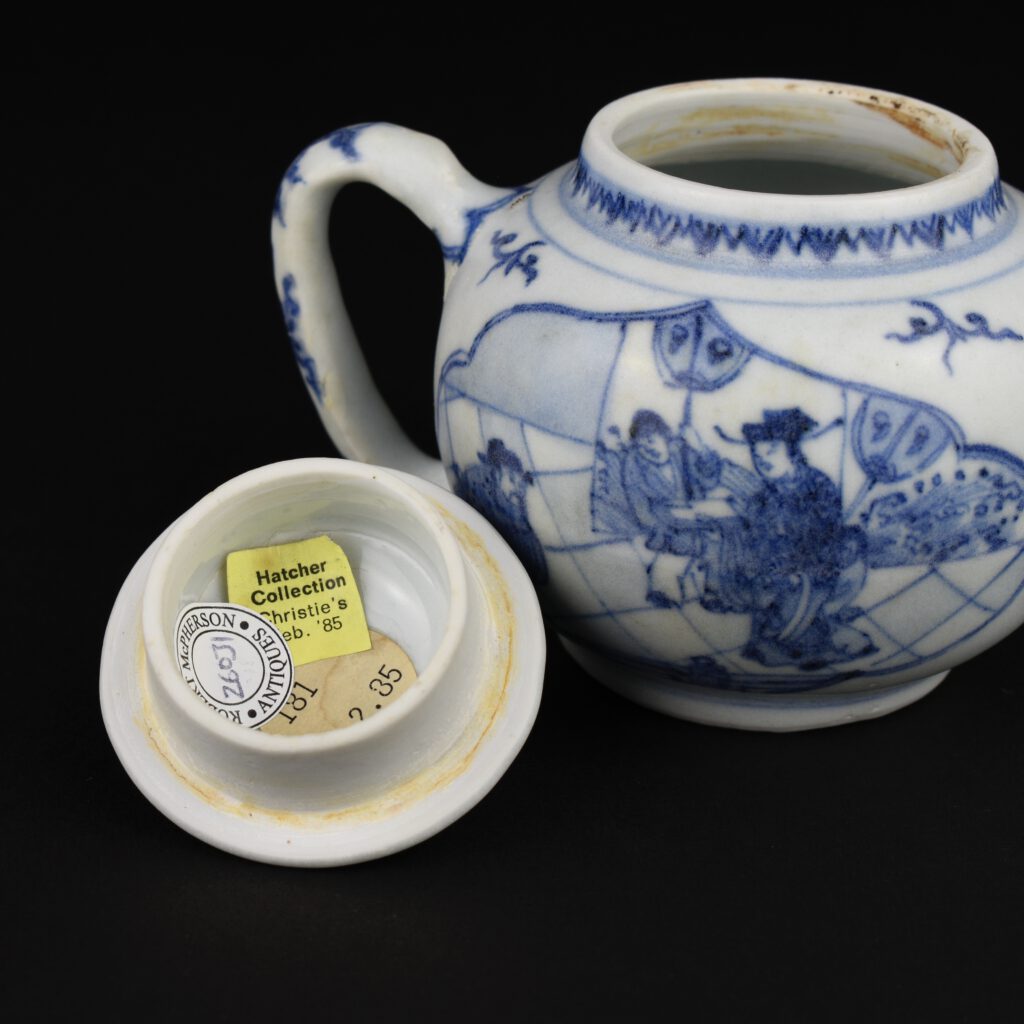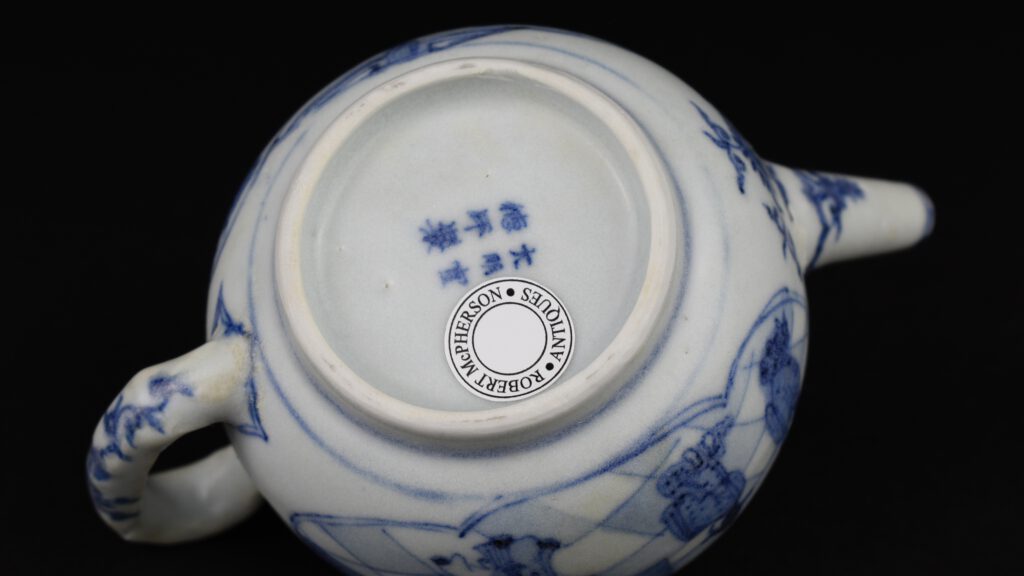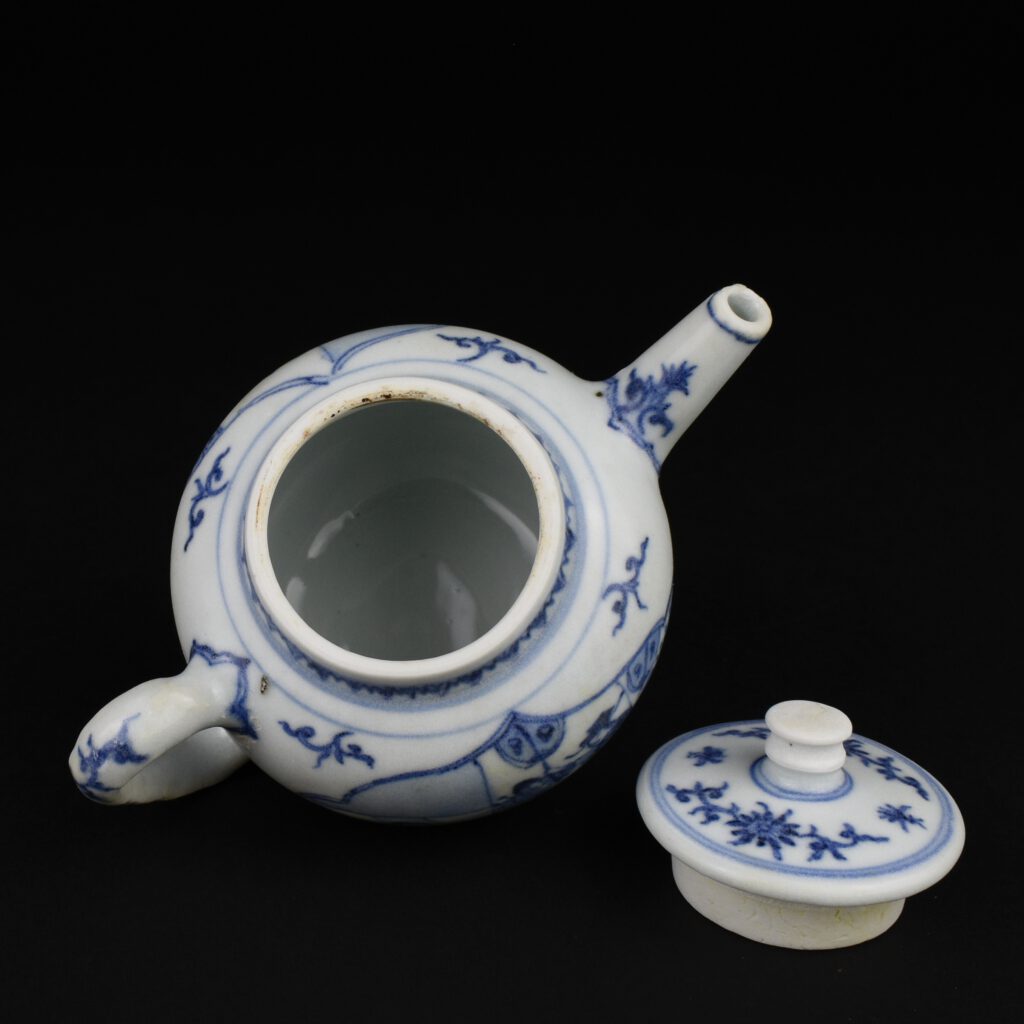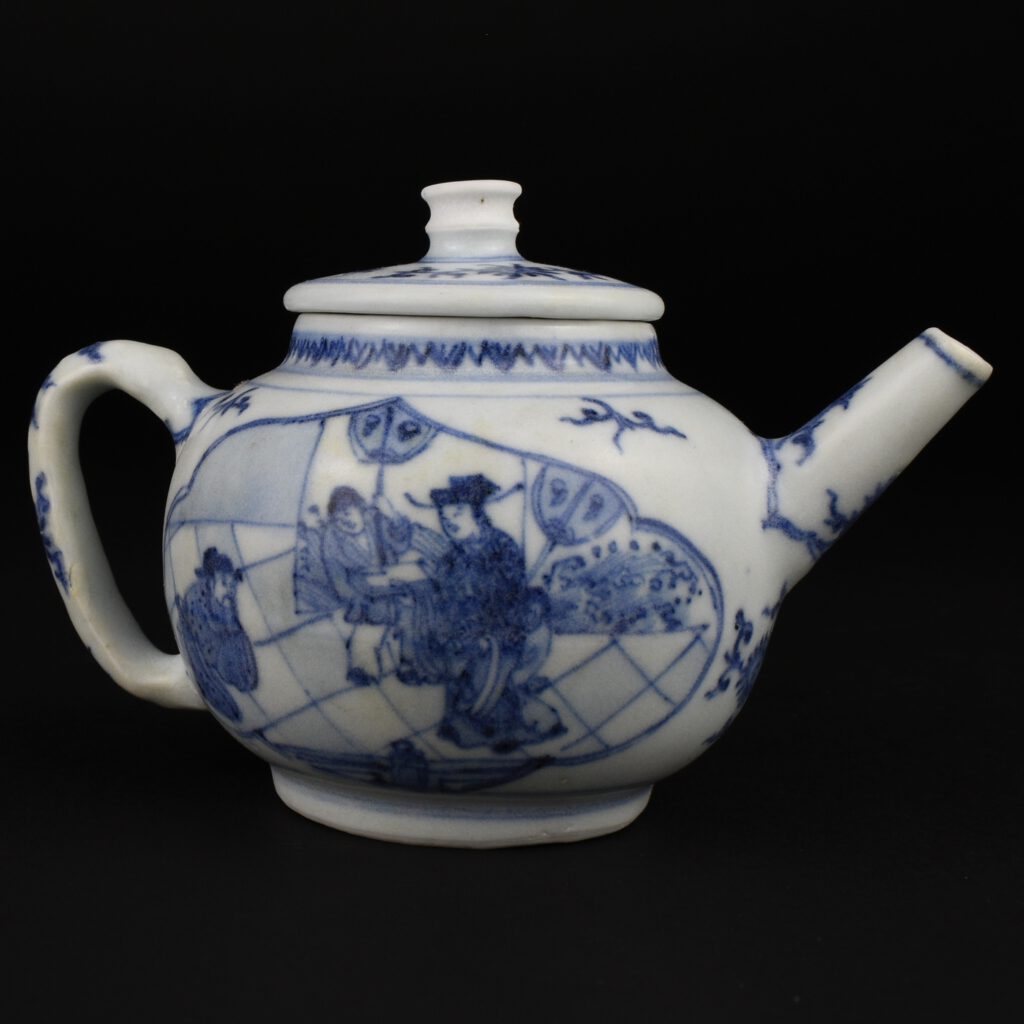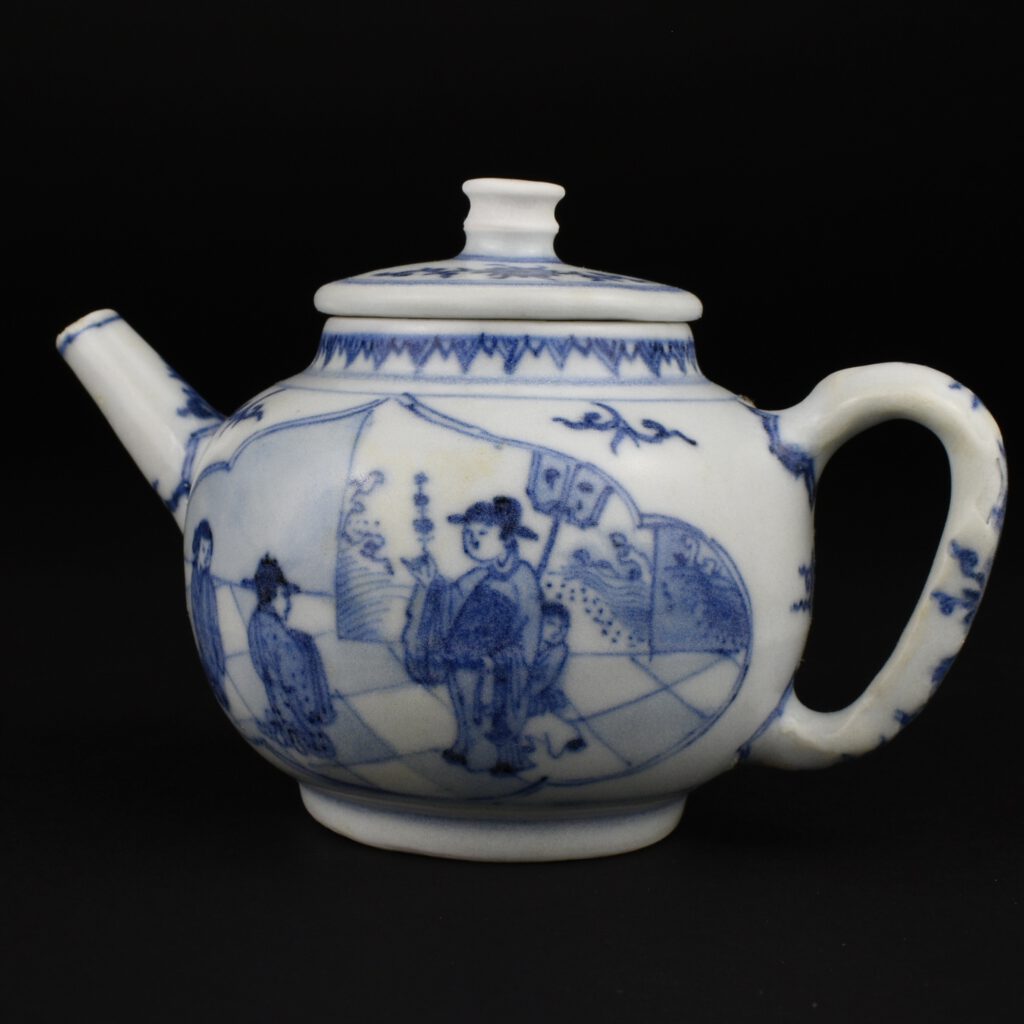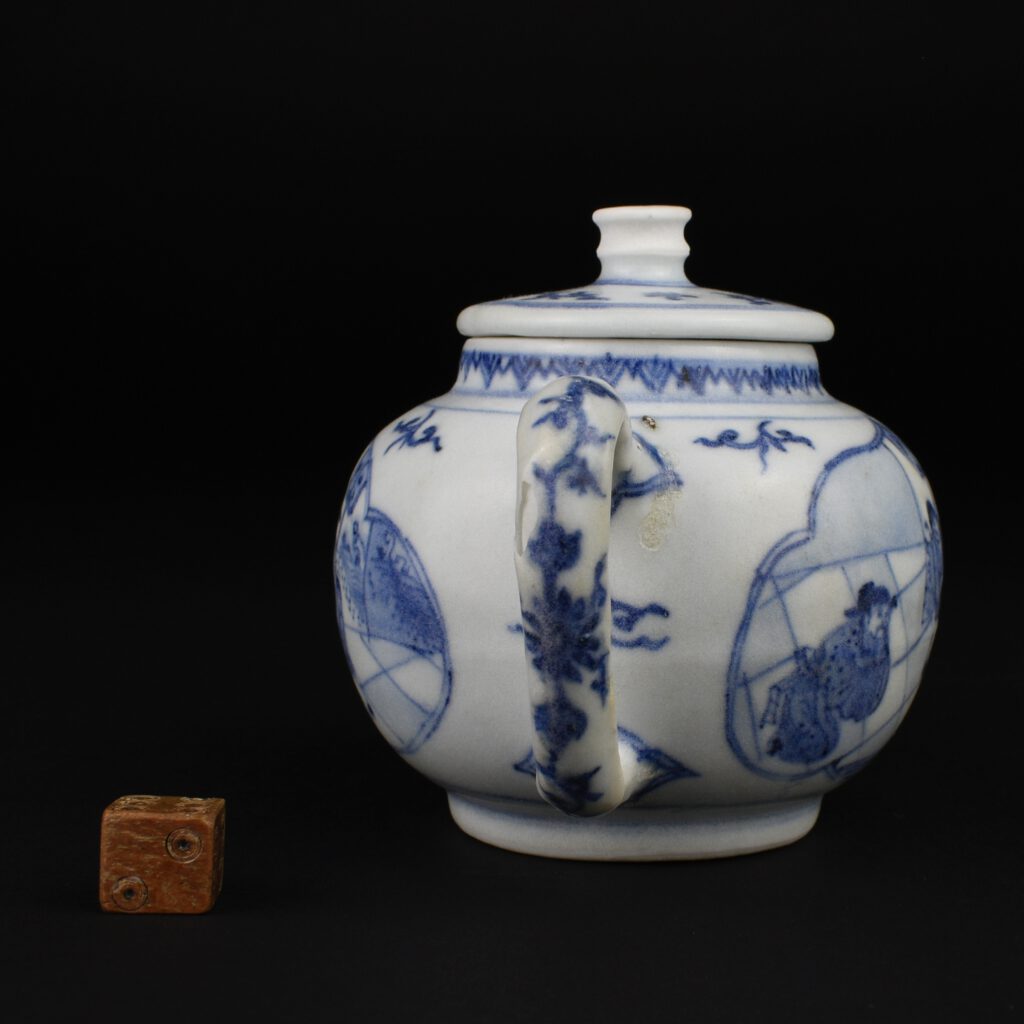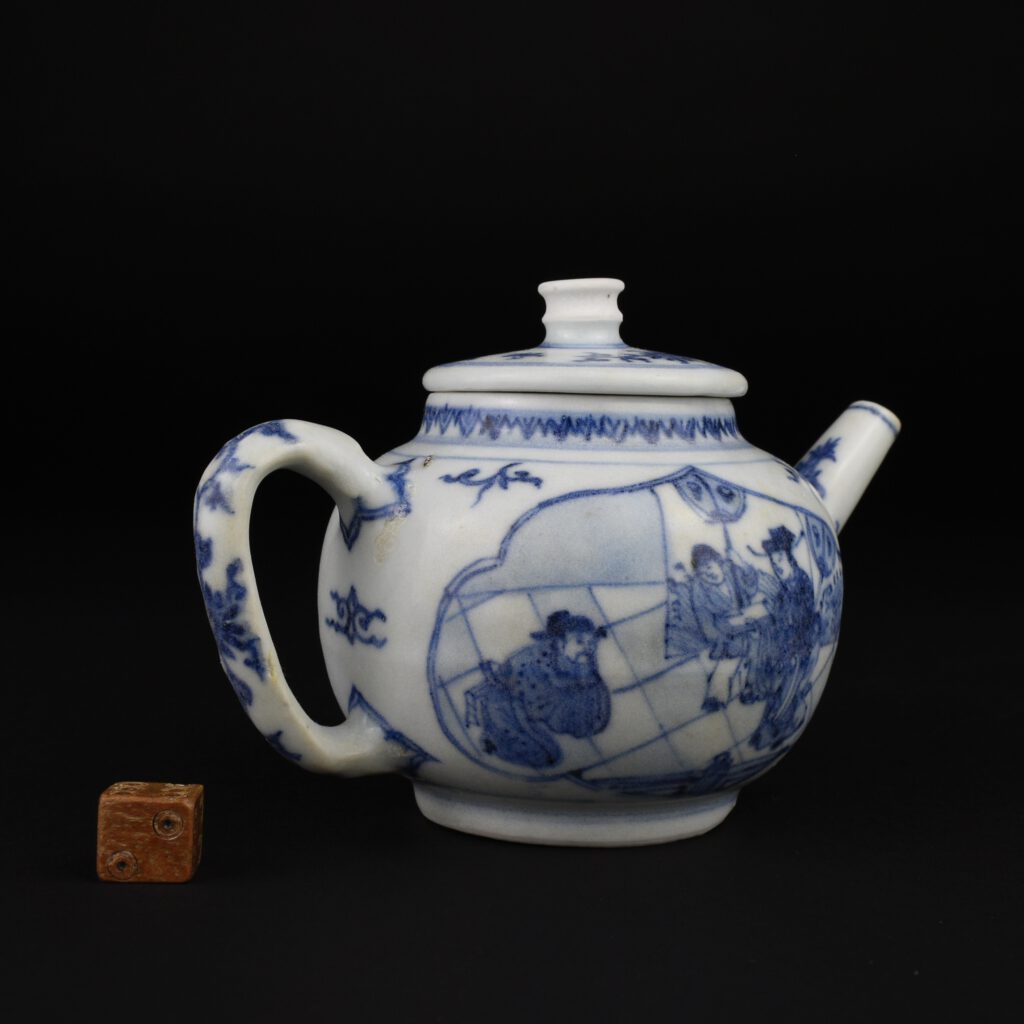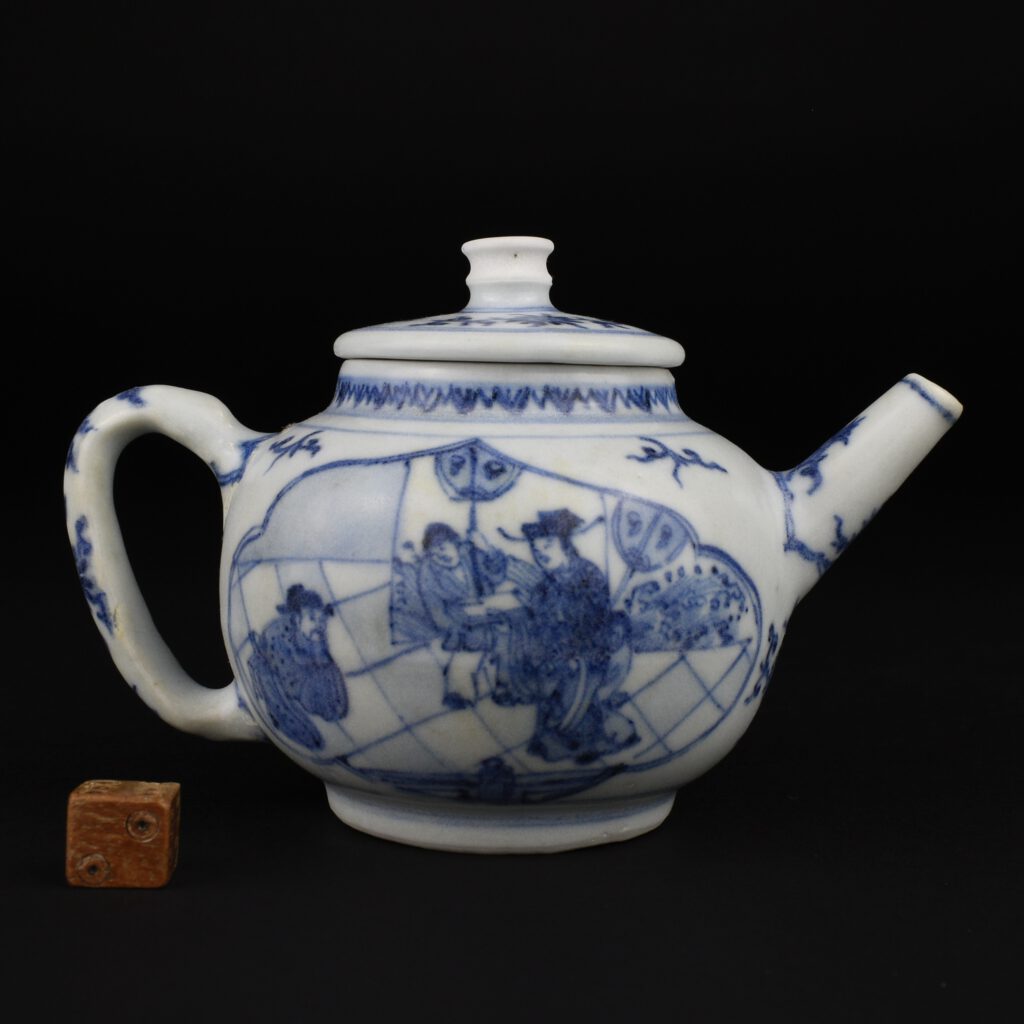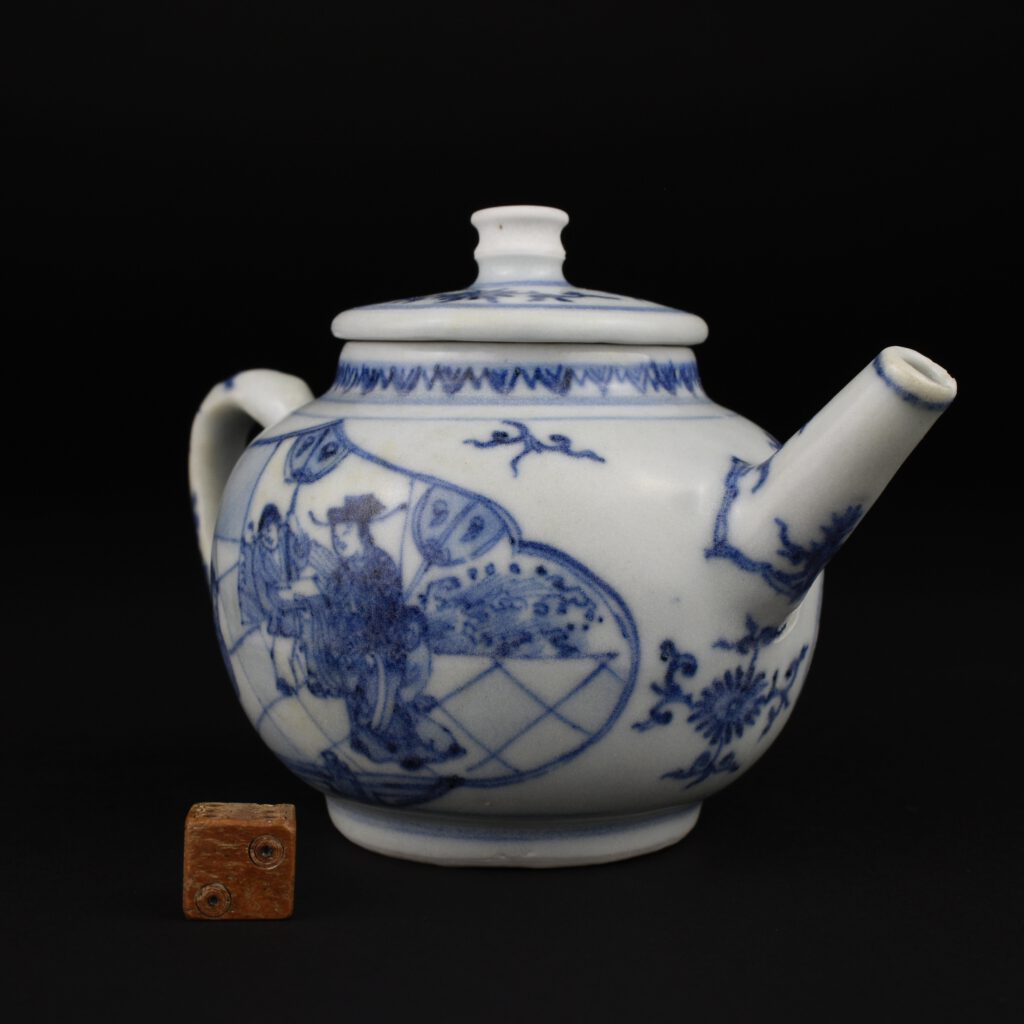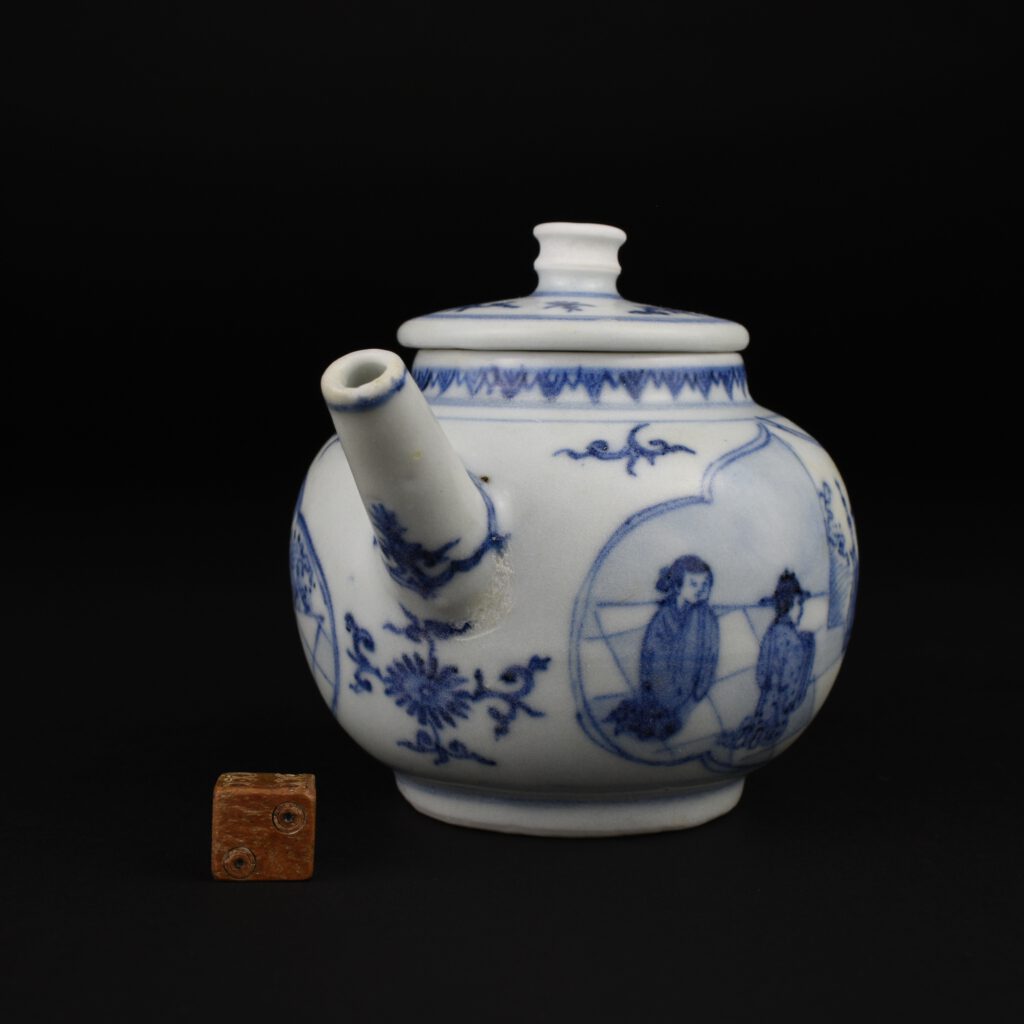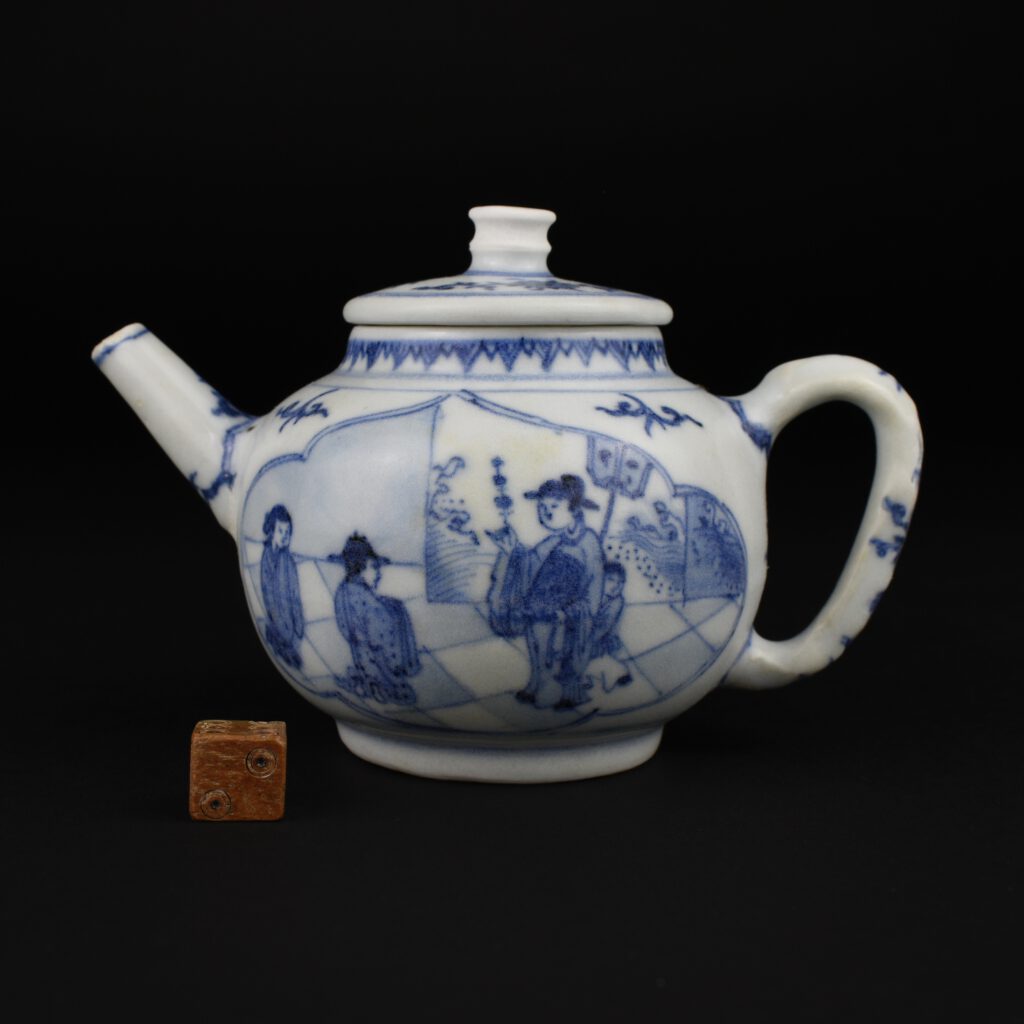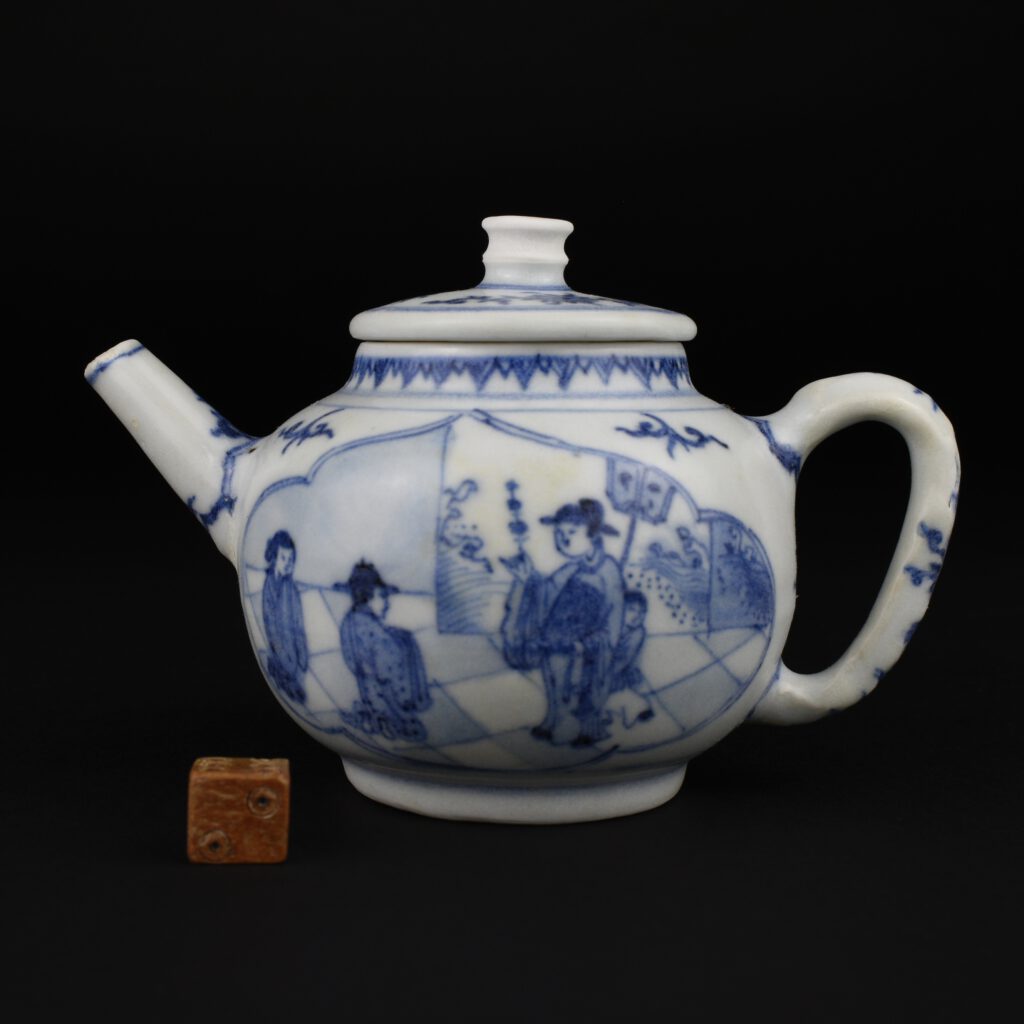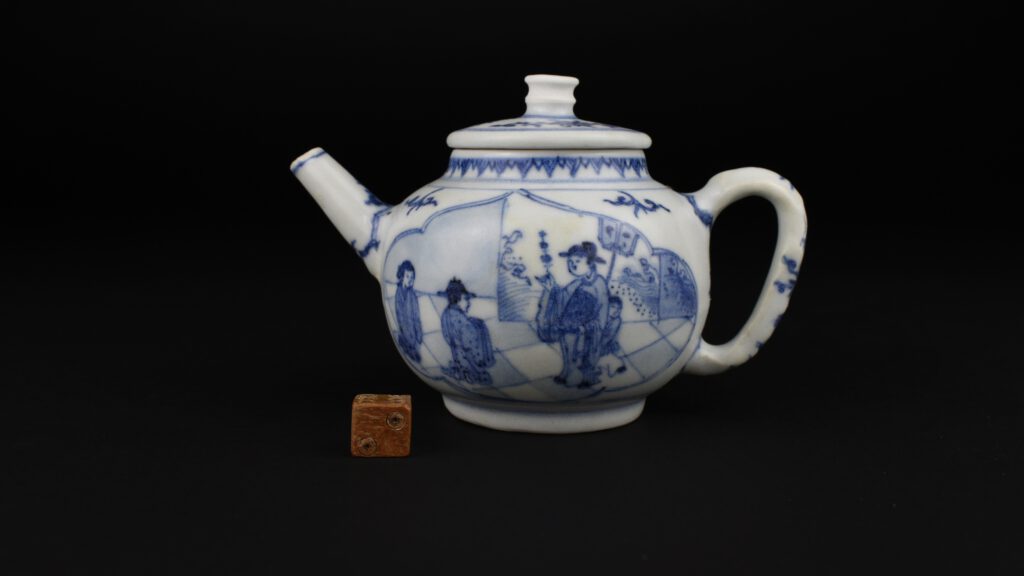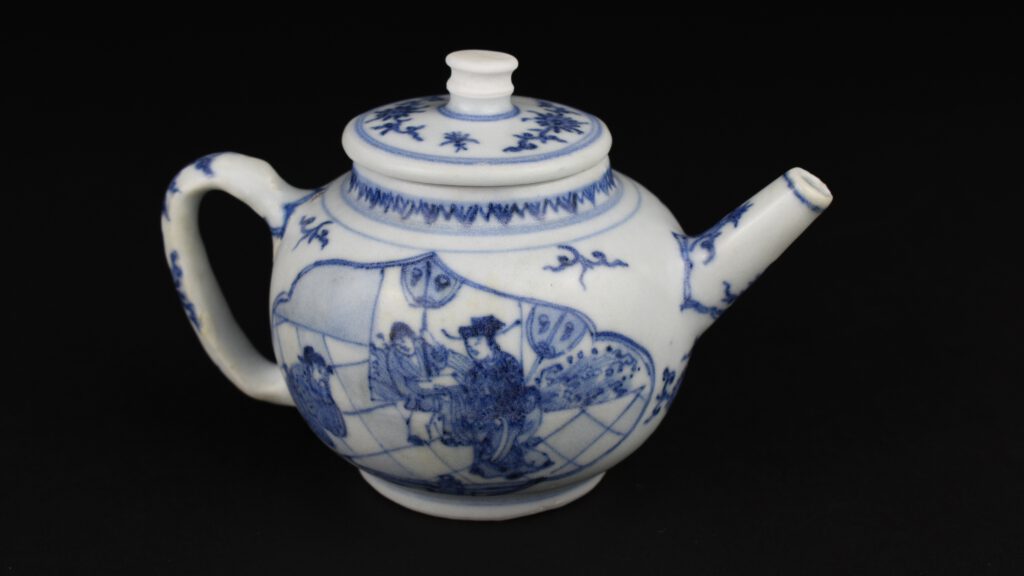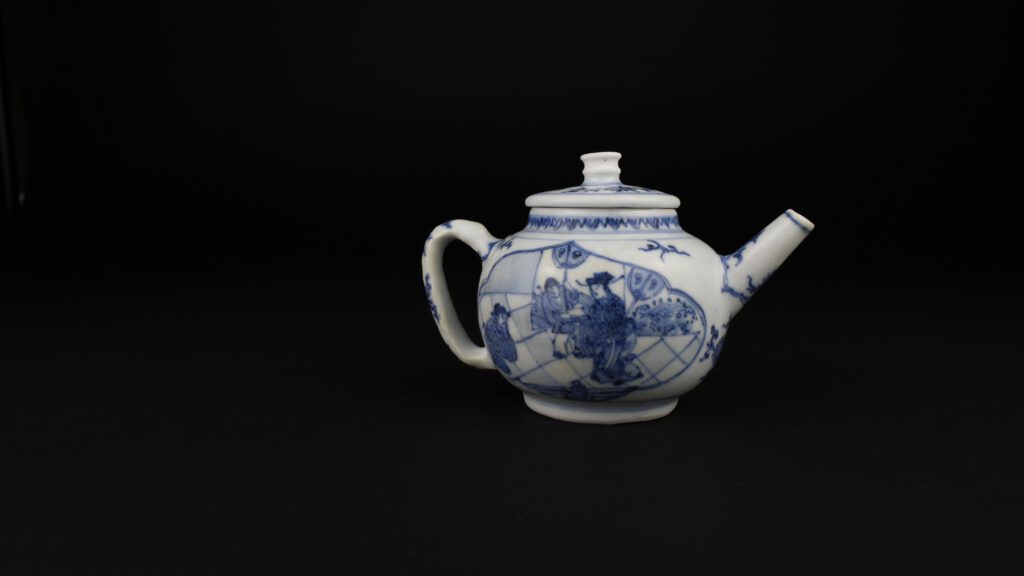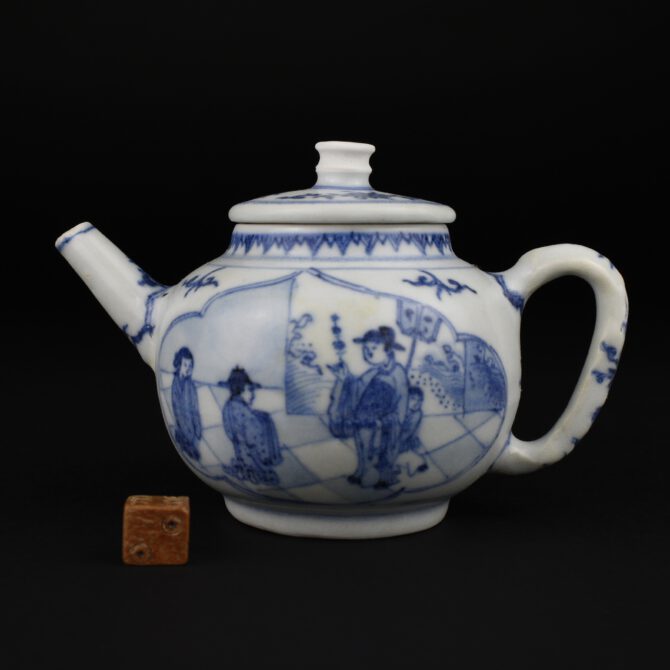
A Fine and Rare Transitional Porcelain Teapot From The Hatcher Cargo
A Fine and Rare Transitional Blue and White Porcelain Teapot or Wine Ewer from the Hatcher Cargo. Late Ming Dynasty, Chongzhen Period c.1643. From the Collection of Captain Michael Hatcher sold at Christie’s Amsterdam, 14 February 1985. This small teapot is finely painted with two lobed and bracketed panels. In one panel an important man stands on a checkerboard floor with a diminutive servant behind him holding a sun shade. In front of the main figure are a woman and a man kneeling in respect. The other panel shows a man holding a book with two servants around him and a scholar kneels in respect. The spout, handle and other free areas are decorated with line work. The finial of the cover is unglazed, this is common with Transitional porcelain, perhaps it was intended to be painted or gilded.
SOLD
- Condition
- In excellent condition. The glaze has a slightly semi-matt look to it but bright with a nice sheen. Small glaze frit to the end of the spout and a burst bubble on the handle.Minor glaze pitting in places, probably burst bubbles.
- Size
- Length : 13 cm (5 1/4 inches).
- Provenance
- Collection of Captain Michael Hatcher; Christie's Amsterdam, 14 February 1985. Label to base, lot 181.
- Stock number
- 26031
- References
- For two similar Hatcher Cargo sleeve vases see : The Hatcher Porcelain Cargoes, The Complete Record (Colin Sheaf and Richard Kilburn, Phaidon, Christie's. 1988. ISBN 0-7148-8046-9. Page 56, plate 72.
Information
The Hatcher Cargo :
The Hatcher Cargo was the first porcelain cargo from a shipwreck to come on to the market. It was sold in several auctions in Christie`s Amsterdam in 1984 and 1985. It remains one of the most important cargoes of shipwreck ceramics ever recovered, despite the lack of historical evidence recorded by the salvage team. Two porcelain covers dated 1643 helped date the wreck but this needed corroborating to give a firm date of the wreck and its cargo.
The dating of the porcelain from the Hatcher Cargo is based on several elements. Firstly, the ceramics recovered form a coherent group, in other words they appear to all have been made at the same time. Secondly comparative dating was used to corroborate the date of the porcelain. For example, blue and white porcelain dishes decorated with a coiled serpent recovered from the Hatcher Cargo match an important dish from the fall of the Ming dynasty, formerly in the Percival David Foundation, now at the British Museum London, this dish can be dated to 1644 - 1645.
Other comparative dating is also consistent with the presumed date of the porcelain. However, the most important dating reference remains the two covers recovered from the wreck datable by inscription to the spring of 1643. Although the the Ming dynasty officially ended in 1644 the transition from the Ming to the beginning of the Qing was messy and protracted. The porcelain made during this period of civil war and chaos is referred to as `Transitional Porcelain`. It covers the period from the last Ming Emperors until the early years of the Kangxi period, which is normally given a date of about 1620 to 1670 . The Hatcher Cargo is a vital dating tool for this previously poorly understood period of Chinese porcelain production.
